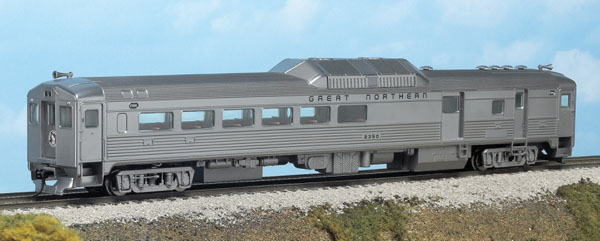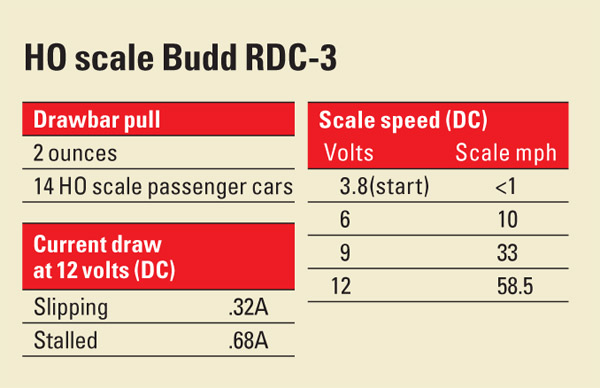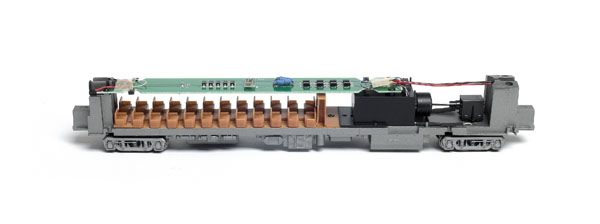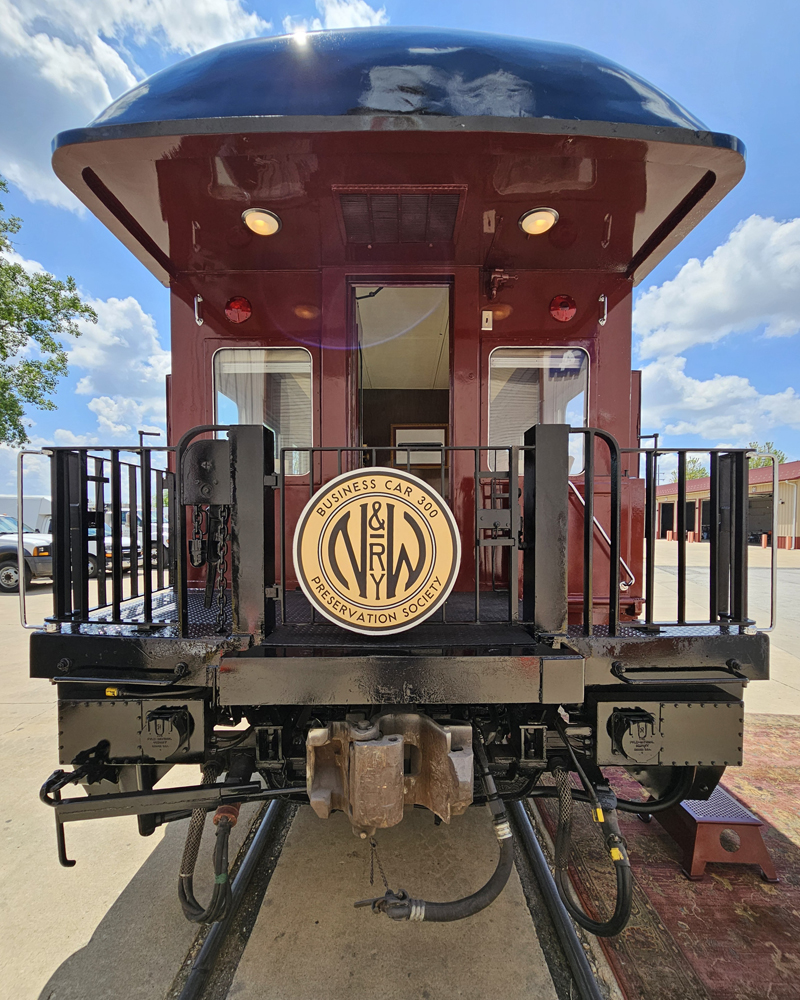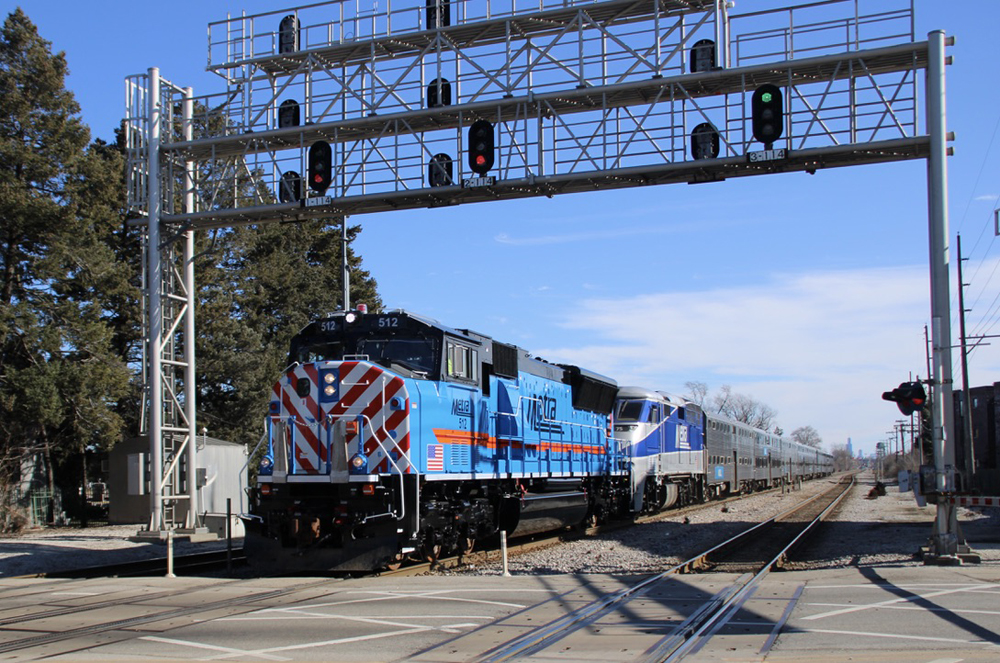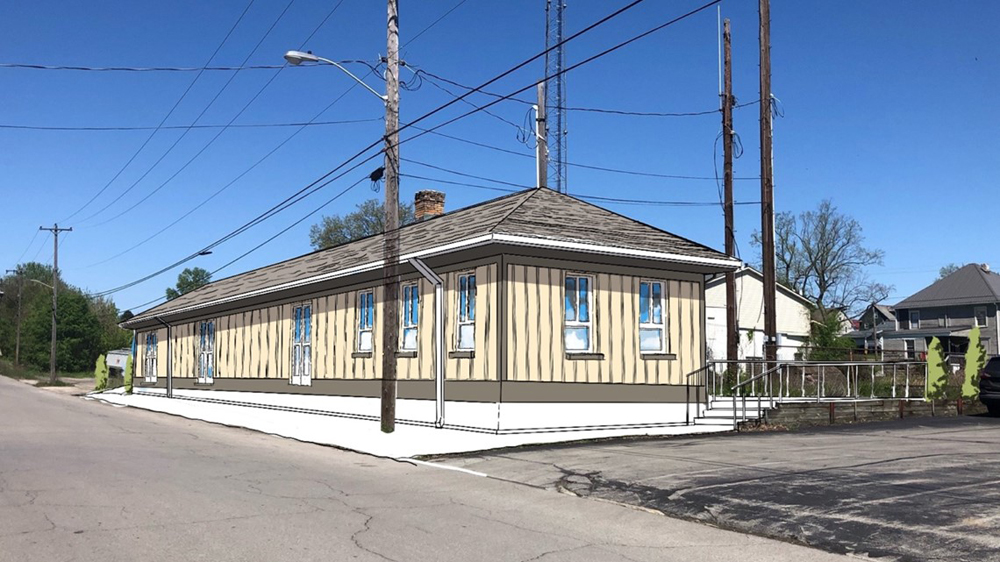The RDC-3 was a Railway Post Office-baggage-coach combine built by Budd from 1952 until 1958. The 85-foot car featured seating for 49 passengers, a 17-foot baggage-express compartment, and a 15-foot RPO mail apartment.
Forty-eight RDC-3s were built during the production run. There were 23 cars built following the pre-1956 design (Phase I). The key spotting features are large cab windows, roof fluting that extends to the cab, and side fluting that terminates short of the vestibules. The Walthers model is based on this version.
The balance of the production run, referred to as Phase II cars, have smaller cab windows, roof fluting that stops short of the cab, and side fluting that reaches the vestibule. The latter allowed Budd to offer cars with wraparound fluting.
Our sample is decorated for Great Northern. The metal plating was smooth and evenly applied. The dark green lettering and numbers are in register, as is the 3-color GN herald on the ends.
The model’s major dimensions match prototype drawings of the pre-1956 car in the September 1953 issue of Model Railroader. The distance over the coupler pulling faces was too long, which is typical as model couplers are oversized.
The full-size GN no. 2350 was a Phase II car, so the Walthers model isn’t an exact match to that specific prototype. The GN prototype also had an oversized baggage room with fewer seats and one less window on the right side of the car than is depicted on the model.
I removed the shell by unscrewing the draft-gear boxes and four Phillips-head screws (one in each corner above the trucks). Inside is a tan plastic interior that’s screw-mounted to the chassis. A printed-circuit (PC) board spans the coach section.
A 5-pole skew-wound motor with a brass flywheel is partially shrouded by black plastic in the baggage section of the car, though some of the gear tower can be seen in the RPO compartment. The motor powers one truck, but all wheels provide electrical pickup.
The starting voltage and speed range could be improved by converting the model to Digital Command Control. Step-by-step directions for making the switch are listed in the instructions.
The model’s 2 ounce drawbar pull is equivalent to 14 HO scale free-rolling passenger cars on straight and level track. However, these cars generally pulled one or two coaches at most.
Overall, Walthers did a good job upgrading its pre-1956 RDC-3. Though our GN sample is based on a later prototype, Walthers offers the car decorated for the New York, New Haven & Hartford and Rock Island, two railroads that had the earlier prototype. Fans of RDCs will enjoy operating this well-proportioned model.
Manufacturer
Wm. K. Walthers Inc.
P.O. Box 3039
Milwaukee, WI 53201
www.walthers.com
Road names: Great Northern (one road number); New York, New Haven & Hartford; and Rock Island. Two road numbers each unless noted
Era: March 1952 to present
Features
- 4-wheel drive
- 5-pole skew-wound motor with flywheel
- 8-wheel electrical pickup
- Correctly gauged 33″ metal wheels
- Detailed coach section
- Proto-Max knuckle couplers, low trip pin on A (baggage) end
- Simulated stainless steel finish
- Weight: 1 pound, 6.2 ounces





